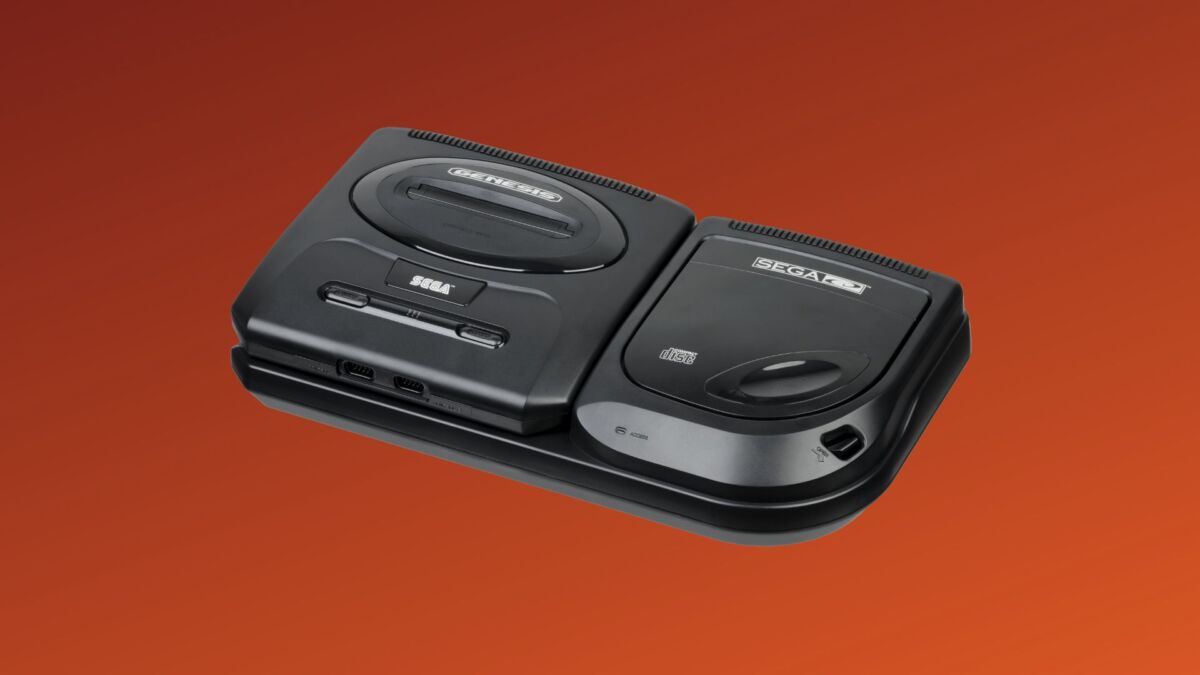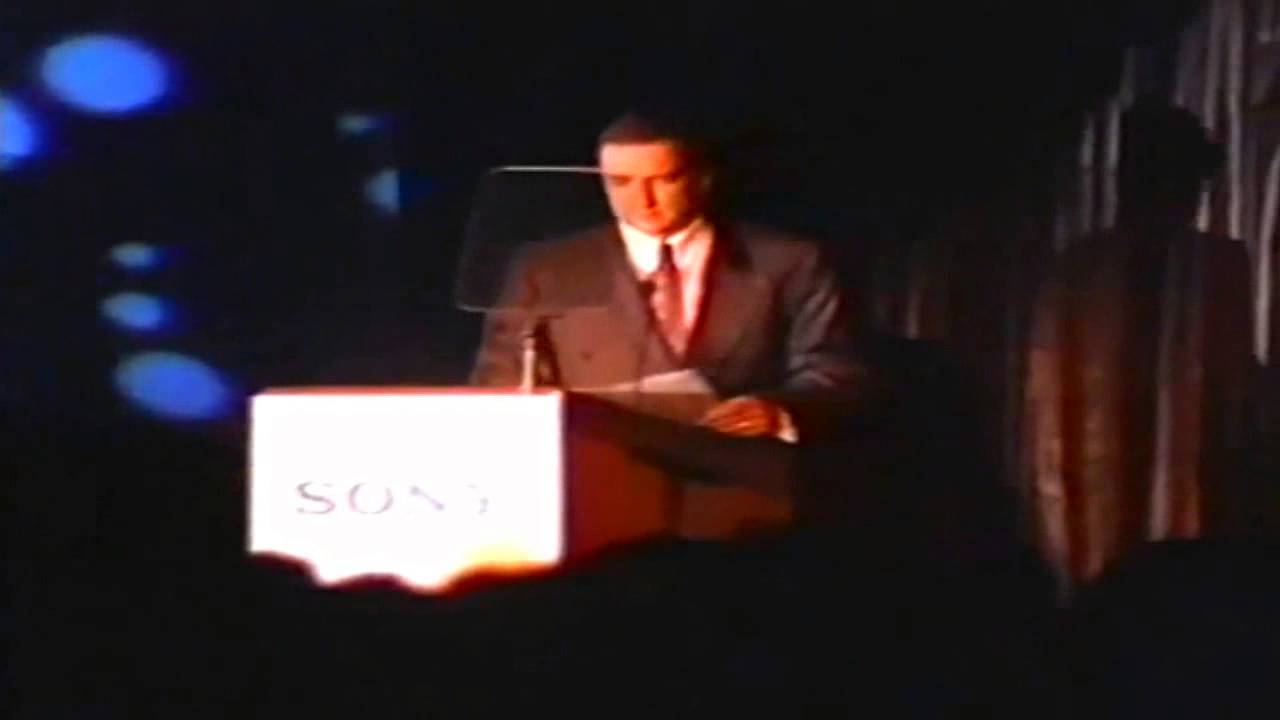It should have been one of Sega’s most impressive achievements. A company that had fought their way out of relative obscurity in the late 80s to become a genuine threat to Nintendo’s dominance in the resurrected home console market, Sega found themselves hitting a serious snag by the mid-90s. While the company soldiered on with new consoles, including their first dedicated CD-based system in the form of the highly anticipated Sega Saturn, factors like new rivals and internal strife would conspire to crush any momentum the company hoped to build in the wake of the massive success of the Sega Genesis.
Released in Japan on November 22nd, 1994, in the US on May 11th, 1995, and in Europe on July 8th, 1995, the Sega Saturn had plenty of hype and excitement. But it just wasn’t enough. The system would fail against expected rival Nintendo and would fall short to the rising juggernaut that would be the Sony PlayStation. Sega’s Saturn is today remembered as a system with serious potential, a handful of truly brilliant, and an element of relative tragedy brought on by chaos and hubris.
What exactly happened to the Sega Saturn? Did Sega drop the ball? How much did Sony and Nintendo influence the company abandoning the system after just a couple of strong years for the next big thing, the Dreamcast? Let’s take a closer look and see exactly how the Sega Saturn failed.
A Series of Unfortunate Decisions

The story of the Sega Saturn’s failure will mention Sony more than a few times. This goes back to before the Saturn was ever developed, with the two companies at one point coming together to discuss the possibility of creating a console. Imagine the timeline where that potential collaboration worked out.
Instead, Sony and Sega parted ways, despite seemingly working well together, supposedly due to Sega Enterprises President Hayao Nakayama not seeing any value in a partnership he felt would primarily benefit Sony. “Why should we help Sony in that way? We’ll do our own system and they can do whatever they want,” was the response former Sega of America President and CEO Tom Kalinske received from Nakayama, feeling then as now that Sega was walking away from an extraordinary opportunity.
This would also not be the last time Sega of America disagreed or even clashed with their parent company back in Japan. As it would turn out, internal squabbles between the two offices would prove to be just as destructive to Sega, the Saturn, and the company’s future as a console manufacturer.
The lack of unity between the two offices can be highlighted in several ways, but let’s start with the Sega CD.
Send in the Consoles! And Add-Ons! And What the Hell is Going On, Sega?

The Sega CD was developed by a team headed by Tomio Takami, with very little involvement from Sega of America. The Sega Genesis had always included an expansion port whose purpose was unknown. But Sega had always intended to create add-ons for the Genesis, and with CD technology finally becoming feasible, the creation of the Sega CD (Mega-CD in Japan) made a certain sense. Unfortunately, for a variety of reasons, and despite several years of support by Sega, the Sega CD was more or less a failure. Some good games were made for the peripheral, including Sonic CD and Lunar: The Silver Star, but the Sega CD didn’t do great in Japan, despite some solid early sales in the country.
It also failed to make much of an impression on Europe, or even in America, selling around 2.24 million units. That’s a far cry from the 30.75 million the Sega Genesis generated. Remember, the Sega CD was designed as an add-on. At the end of the day, no one really cared.
But 2+ million was seemingly enough to convince Sega that an add-on for the Genesis could work under the right circumstances. This was at least part of the mentality behind the release of the Sega 32X in America on November 21st, 1994, in Japan on December 3rd, 1994, and in Europe in January of 1995. It did not do well, receiving some early positive reviews that soon gave away to extreme derision when comparing the add-on to other 32-bit consoles available or coming out in short order.
Combined with a poor library of games, a marketing campaign that didn’t seem to win anyone over, and some other key factors, the 32X sold less than a million units. No one really saw the purpose of such a device, with Nintendo working on their next big system, the Atari Jaguar technically existing, and Sony preparing to release the PlayStation just weeks after the 32X arrived.
Guess what else was out around the same time?
The Botched Sega Saturn Release
At this point, it’s becoming hard to keep up with just how many bizarre decisions Sega was making, owing to an almost complete lack of cooperation between Sega of Japan and Sega of America. No one really had any faith in making games for the Genesis combined with both the 32X and CD (known as the Sega CD 32X in North America), and yet this and other strange choices were made. None of these choices inspired consumer confidence, creating a situation in which the Sega Saturn would now have to overcome a wide range of obstacles both internally and externally in order to be successful.
And where was the Sega Saturn in all this?
Believe it or not, but the Sega Saturn was released on November 22nd, 1994, in Japan. This was the same month the 32X was released in North America. Even wilder is that the 32X was released in Japan just one month after the Saturn was already out. Clearly, Sega didn’t actually care about the 32X, which was fine because they were about to become extremely busy dealing with one Saturn disaster after another.
Things started off smoothly enough. The Saturn sold well upon release in Japan, and would enjoy a relatively healthy lifespan over there, but the system failed to do anything meaningful in the US or Europe. It didn’t help that the Saturn had a dreadful U.S. release, with internal squabbling between Sega of Japan and Sega of America leading to a surprise announcement at E3 1995 that the Saturn would be in stores as the press conference was being held. Tom Kalinske has famously gone on record as saying he was against the early release, done as a way to beat their old pals Sony and their upstart console to market. While they were successful in doing this, Sony wound up utterly destroying them with their E3 1995 press conference.
And how did that go?
“$299,” Sony announced casually at their own press conference, a full $100 less than what the Saturn would be selling for.
The news succeeded at completely eclipsing the Saturn’s plans and starting them off on the worst possible footing. People were willing to wait and see what Sony had in store, and that would prove to pay off in a big way for the PlayStation, which began outselling the Saturn almost immediately and never looked back. By the end of 1996, Sony had 2.9 million units sold to Saturn’s paltry 1.2 million. Sega and the Saturn would surpass the Nintendo 64’s 5.54 million sales in Japan, which was certainly a victory, but in the grand scheme of things, this didn’t matter either.
The Life and Death of the Sega Saturn

Another problem facing the Saturn outside of Japan was a lack of decent games. At least at the beginning. The Saturn had impressive specs, with the CPU offering 32-bit RISC MIPS R3051 (33.9MHz), 2MB of RAM, a 3D Geometry Engine, and a GPU that promised 180,000 textured polygons per second. This wasn’t a bad console by any stretch of the imagination.
But with a mediocre launch library in the US, the Saturn just couldn’t compete. There was no mainline Sonic game, which confused and annoyed players. Only four games were available at launch, with no third-party support whatsoever.
Arcade ports of Virtua Fighter and Daytona USA were good games, but neither could stop the onslaught of success Namco was about to enjoy with Tekken and Ridge Racer, exclusive to the PlayStation. Panzer Dragoon and Clockwork Knight are two of the best Saturn games of all time, particularly the extraordinary Panzer Dragoon, but these launch titles were effectively all a western Saturn player could expect to play. The number of games rose by the end of the year and the console’s asking price decreased, but by that point Sony’s lead was just too much.
Why the lack of third-party support? Because they were all busy making games for the Saturn’s original release date. Sega had nothing to back up their decision to jump the gun on the release of the Saturn ahead of the PlayStation. They didn’t even really have the Genesis at a time when 16-bit systems were still performing well, as the company put most of their focus on the Saturn starting in 1995, which also annoyed those fans who had supported nonsense like the 32X and Sega CD. On top of all of this, the Saturn was very, very difficult to program for.
They also managed to annoy a slew of retailers, including KB Toys, which actually meant something back then. Releasing the system as an early surprise was one thing, but Sega also decided to make this release exclusive to retailers like Walmart. Another blunder that led to Sega beginning to abandon the console by the start of 1998.
The Saturn would see continued support in Japan after the release of the Dreamcast, but everyone else was effectively left out in the cold. Only 7 games were released for the North American Sega Saturn in 1997. Sega fans would have to wait until the Dreamcast, and in that time Sony and the PlayStation only flourished further. Nintendo would trudge along, but it was clear that the Sega Saturn was getting out the game. The system in the US and Europe had a lifespan of less than three years.
Celebrating What Made the Saturn Special

With so much discussion of failure and poor decision making, it’s easy to simply call the Sega Saturn a failure and leave it at that. But that’s just not true. The marketing campaign was at least fun, with intense and creative print and TV advertisements.
And despite the issues going on with Sega behind the scenes, those who did support the Saturn in the west or anywhere else still got a number of awesome releases. Shining Force III, Panzer Dragoon Saga, Magic Knight Rayearth, Sega Rally Championship, and NiGHTS Into Dreams are just a few of the titles that were released on the Sega Saturn and are now considered some of the best games the company ever released for their hardware.
The Sega Saturn’s spiral into catastrophe wasn’t because the system or its games sucked. Despite some hiccups, these things are not to blame for the Saturn’s failure. Internal strife, making dangerous snap decisions, and support for add-ons and peripherals that no one really needed are all reasons why the Saturn marked the beginning of the end for Sega as a hardware manufacturer.
But it was an amazing ride nevertheless. There are still plenty of Saturn fans out there, celebrating the console’s definitive hits, and pointing out the obscurities that suggest a system with profoundly more personality and heart than perhaps people could see in the mid-90s.
Besides all of that, there’s something special about that era of video game history where Sega was making brilliant software to back up their own impressive hardware. Sega would try their hand at consoles one more time after the Saturn, and while this whole period is rightfully seen as a difficult one for the company, there’s no question that there’s also a certain magic to this time that just doesn’t exist in the present.
What we’re saying is, if someone finds the timeline where the Saturn did a lot better outside of Japan, and Sega is still making consoles in the 2020s, let us know.
READ NEXT: Ranking Every Sega Console From Worst to Best
Some of the coverage you find on Cultured Vultures contains affiliate links, which provide us with small commissions based on purchases made from visiting our site.

